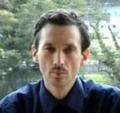Millions of people suffer every day from exercise induced asthma that leads to irritation and inflammation of the breathing passages (bronchi) of the lungs. There are several essential changes in the respiratory system due to exercise, if we compare exercise with quiet breathing at rest.
These changes include greatly increased minute ventilation, losses of CO2 causing bronchospasm (shrinking of air passages - bronchi and bronchioles), overcooling and drying of airways due to large movements of air.
Most official medical sources believe and assume that bronchospasm due to exercise is unavoidable. However, over 170 Russian family physicians found that nose breathing at exercise greatly reduce and, in most cases, eliminates exercise-induced asthma attacks. These medical people teach the Buteyko breathing technique in Russia, and they tested their findings on more than 150,000 of asthmatics.
Furthermore, these doctors believe that nose breathing during exercise produces much stronger effects on fitness and VO2max in competing athletes and helps to recover from injuries and asthma symptoms.
2 Western teams of medical doctors also investigated effects of nasal breathing on bronchospasm. These medical doctors also discovered benefits of nose breathing on lung function tests since reduced ventilation during nose breathing at exercise improves lung function tests in asthmatics and increases their body oxygen levels.
Apart from higher CO2 levels in the lungs and blood, nose breathing allows absorption of nasal nitric oxide. Both chemicals are most potent known vasodilators (factors that help to expand blood vessels - arteries and arterioles). As a result, nose breathing at exercise leads to lower pulse due to less strain for the heart and improved oxygen transport.
The only temporary disadvantage of nose breathing is that unfit people generally are not able to exercise vigorously due to heavy breathing at rest (before exercise) and low initial body oxygenation. The solution is to increase body oxygen levels with slower exercise until about 20-25 seconds for the body oxygen test. Then former asthmatics can enjoy more intensive physical exercise with easy nose breathing all the time.
Resources from NormalBreathing.com
Exercise-Induced Asthma: Definition, Causes and Treatment - for medical professionals, with details of pathophysiology
Vasodilators: Definition and Most Potent Natural Vasodilators (CO2 and nitric oxide)
Bronchospasm: : Its Definition, Symptoms, Causes, and Treatment
NormalBreathing.com has hundreds of medical quotes, references, graphs, charts and tables, analysis of numerous respiratory techniques, results of clinical trials, free breathing exercises with lifestyle modules, manuals and techniques, and other resources to increase cell and body oxygen levels and improve our health.
References
Shturman-Ellstein R, Zeballos RJ, Buckley JM, Souhrada JF, The beneficial effect of nasal breathing on exercise-induced bronchoconstriction, American Review of Respiratory Diseases 1978 Jul; 118(1): 65-73.
In the first step of a study of the relation of nasal and oral breathing during moderate treadmill exercise to the onset of bronchoconstriction in young patients with perennial bronchial asthma, it was observed that most subjects spontaneously breathed with their mouths open when instructed to breathe "naturally." Subsequently, when they were required to breathe only through the nose during the exercise, an almost complete inhibition of the postexercise bronchoconstrictive airway response was demonstrated. When instructed to breathe only through the mouth during exercise, an increased bronchoconstrictive airway response occurred, as measured by spirometry, flow-volume relationships, and body plethysmography...
Mangla PK, Menon MP, Effect of nasal and oral breathing on exercise-induced asthma, Clinical Allergy. 1981 Sep; 11(5): 433-9.
The effect of nasal as well as oral breathing during level-ground running for 6 min on the post exercise bronchial response was studied in fifteen people (five asthmatics with exercise liability, five asthmatics with no such liability and five normals). Each patient did the exercise twice; once with the nose clipped and once with the mouth closed. FEV1 was measured before exercise, immediately after exercise and at 5, 10, 15, 20 and 30 min thereafter. A fall in FEV1 of 20% or more from the basal level was taken as evidence of bronchoconstriction. When the patients were required to breath only through the nose during the exercise, the post-exercise bronchoconstrictive response was markedly reduced as compared with the response obtained by oral breathing during exercise, indicating a beneficial effect of nasal breathing. Nasal breathing was beneficial as compared with oral breathing in normals as well...
Dr. Artour Rakhimov is a health educator and Oxygen Remedy teacher. He is the author of books and the educational website NormalBreathing.com devoted to natural self-oxygenation and health education. Normal Breathing defeats chronic diseases!

Post new comment
Please Register or Login to post new comment.